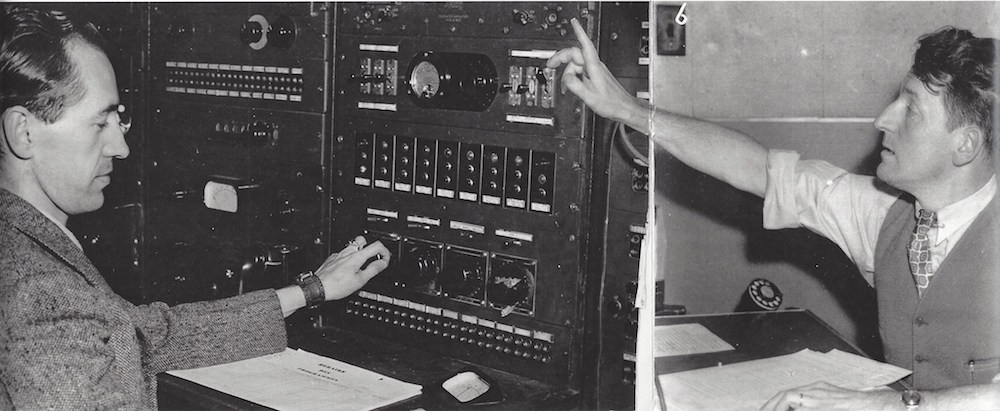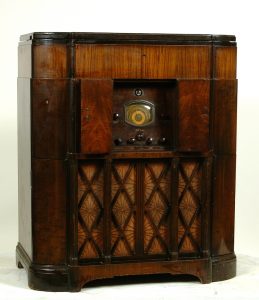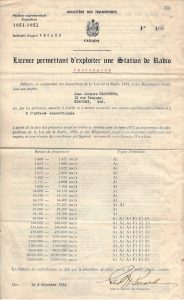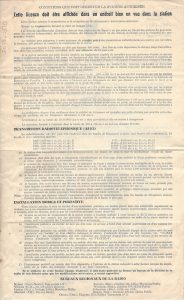Regulation
In 1905, the Wireless Telegraphy Act made the Department of Marine and Fisheries the regulator and licensing body in Canada. Much of the early radio communication was ship-to-shore. The timing of the act paralleled those of Britain in 1904 and Australia in 1905. The equipment of many early Canadian radio stations had been used previously on a ships and not in the home. The regulation by the Department of Marine and Fisheries made perfect sense in the Canadian context.
In the First World War, soldiers returned from their military service with training as radio operators. They became the technical experts for the first generation of Canadian radio stations.

Radio Behind the Scenes, CKAC Radio Station (c. 1940s), Montréal, Québec. Musée des ondes Emile Berliner.
In 1922, the Department of Marine and Fisheries issued 21 commercial licenses. There were two larger groups of license holders namely newspapers, which held 8 of those 21 licenses, and radio manufacturers, which held 7. By 1932, the number of broadcasting license holders had increased to 77. Four groups held the larger shares. They were railways, broadcasting companies, newspapers, and radio manufacturers.
Changes in regulation of radio broadcasting in the United States affected Canada in many ways. First, because Canadians could hear U.S. stations. Second the relocation of stations in the US affected reception of stations in Canada, the United States, and Mexico. Finally, the changes in the United States encouraged Canadian stations to become part of American networks. In 1927, Congress passed the American Radio Act. General Order 40 from the Federal Radio Commission established by this Act set new standards for broadcasting in the US which completely reorganized the allocation of broadcasting frequencies. This reorganisation included Canadian broadcasters. In 1928, Canada’s government appointed the Aird Commission. The Commission’s goal was to make recommendations about the future of Canadian broadcasting. By that time, four Canadian radio stations had joined CBS and NBC as American affiliate stations.

Superheterodyne, RCA Victor: Model D22-1 (c. 1935), New Jersey, United States, 110 x 91 x 49cm. Musée des ondes Emile Berliner.
In 1929, the Aird Commission Report recommended a national network of stations in Canada. For this, the government would nationalize existing stations. Parliament created a national network with the passage of the Canadian Radio Broadcasting Act in 1932. The new Canadian Radio Broadcasting Commission operated in a compromise that allowed commercial broadcasting to continue. Discussions of radio regulations continued during the 1930s. There were Special Commissions of Radio Broadcasting in 1932, 1934, 1936, 1938, and 1939. In 1936, the Canadian Broadcasting Corporation replaced the Canadian Radio Broadcasting Commission. It became the regulator as well as the national broadcaster. Both national public broadcasting and commercial broadcasting continued to coexist in Canada.



